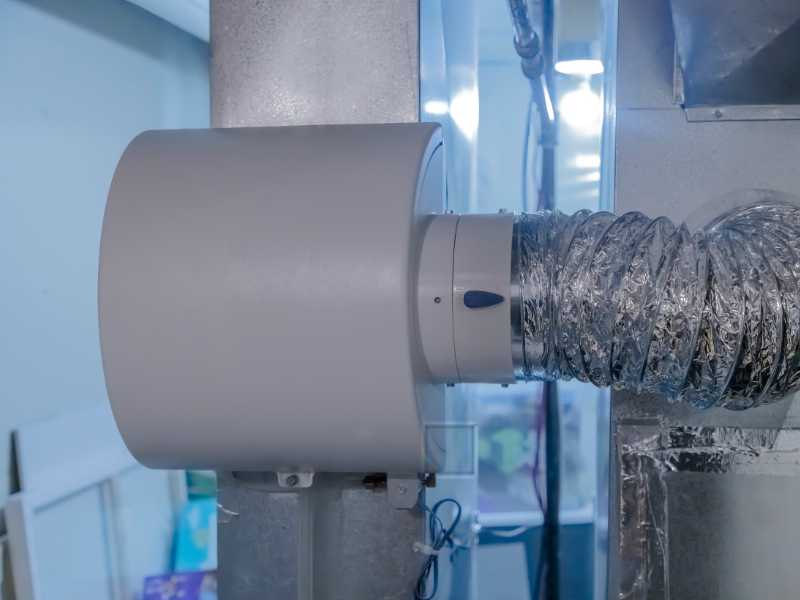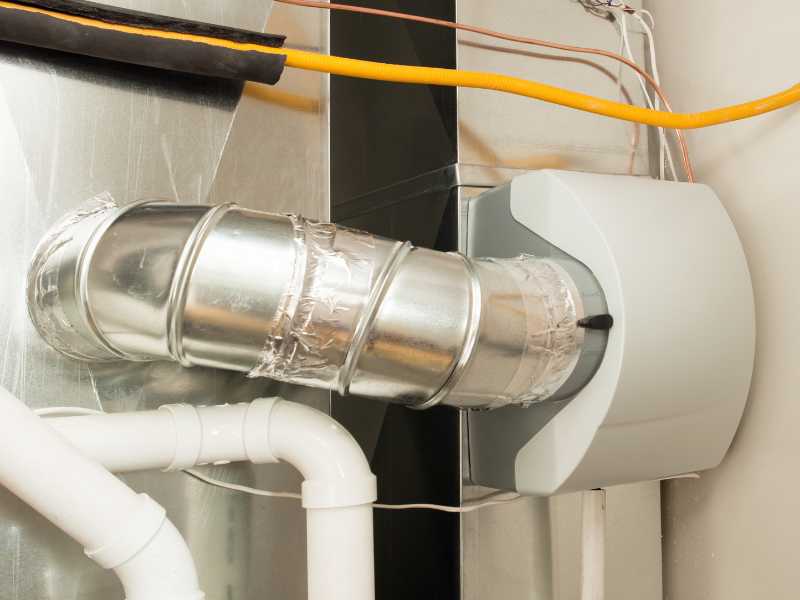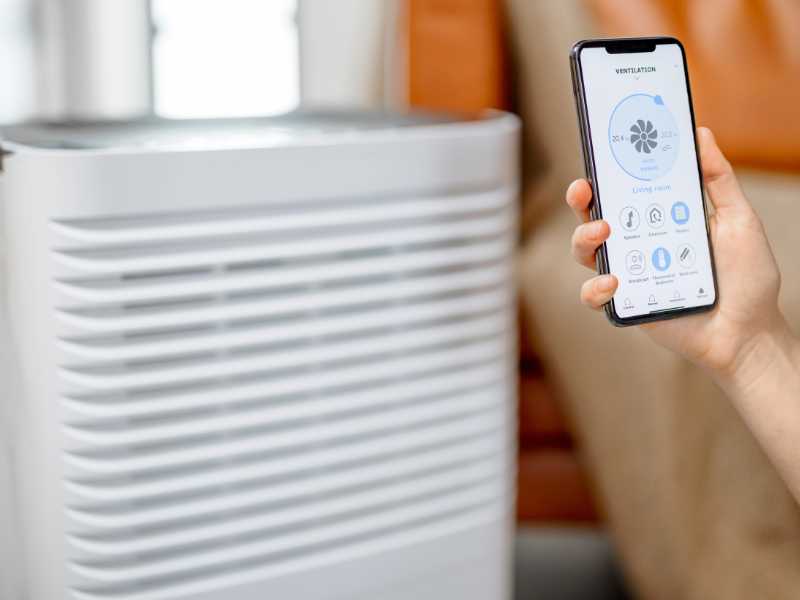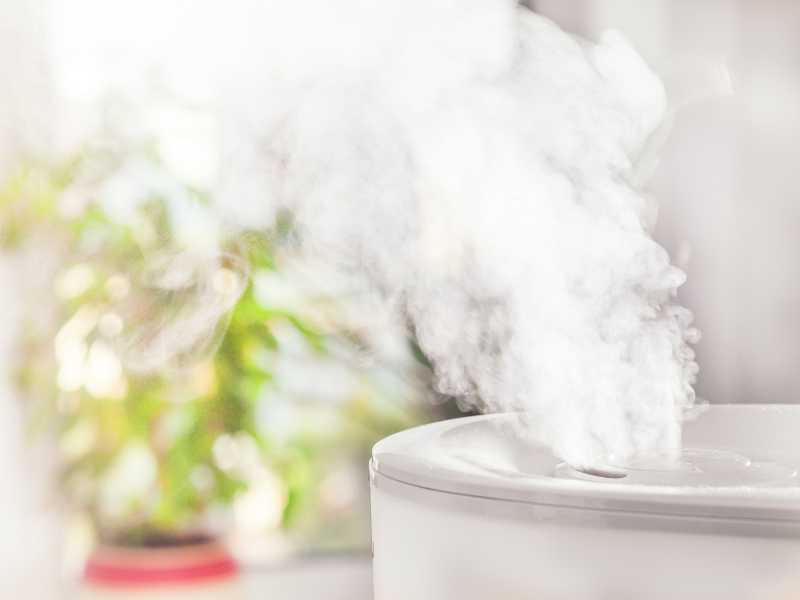Humidifiers for Dry Air: Benefits and Buying Guide

Humidifiers, often overshadowed by more talked-about HVAC solutions, carve out their own essential niche in creating a healthier and more comfortable indoor environment. Their unique ability to add moisture to the air sets them apart, making them indispensable tools in combating the discomforts of dry climates and seasons. This distinct role highlights the importance of humidifiers as standalone solutions within the broader spectrum of air quality and comfort devices.
Key types of humidifiers include Ultrasonic, Evaporative, Steam Vaporizer, Impeller, and Central humidifiers, each known for its specific method of moisturizing the air. Single Room and Whole House options further diversify the choices available, catering to different needs and preferences. Delving deeper, each variety of humidifier brings its own set of benefits, maintenance considerations, and suitability for particular environments or uses.
The following sections will delve into these aspects, offering a comprehensive exploration of humidifiers. This includes how they work, their advantages, how to choose the right one for your space, and tips for maintenance and optimal use. This guide aims to provide a deeper understanding of humidifiers, underscoring their value in enhancing indoor air quality and overall well-being.
What is a Humidifier

A humidifier is a device designed to increase the moisture level in the air of a specific area, be it a single room or an entire house. These devices work by releasing water vapor or steam to elevate the humidity levels, thus improving air quality and comfort. Humidifiers come in various types, including Ultrasonic, Evaporative, Steam Vaporizer, Impeller, and Central systems, each employing a unique method to add moisture to the air.
They serve an essential purpose in creating a healthier living environment, especially in areas where dry air is a common problem. By maintaining optimal humidity levels, humidifiers can alleviate various health issues related to dry air, protect wooden furniture and musical instruments from damage, and even help indoor plants thrive.
Why Use a Humidifier
Using a humidifier is beneficial for several reasons. Firstly, it helps to alleviate dry skin and chapped lips, common issues in low-humidity environments. Secondly, it can ease respiratory symptoms during dry seasons, making breathing easier for people with colds, allergies, or asthma.
Additionally, maintaining a balanced humidity level is crucial for protecting wooden furniture and musical instruments from drying out and cracking. For those with indoor plants, a humidifier can help keep them healthier by mimicking their natural humid environments. Overall, using a humidifier contributes to a more comfortable and health-friendly indoor atmosphere.
To alleviate dry skin and chapped lips
Using a humidifier adds moisture to the air, which can prevent dryness that leads to skin irritation and chapped lips. In environments where the air is dry, a humidifier acts as a moisture replenisher, keeping your skin and lips feeling soft and smooth.
To ease respiratory symptoms during dry seasons
Dry air can aggravate respiratory symptoms, such as congestion and throat irritation. A humidifier introduces moisture into the air, easing breathing and providing relief to those suffering from colds, allergies, or asthma. This makes it easier to breathe and sleep.
To protect wooden furniture and musical instruments
Low humidity can cause wood to lose moisture and shrink, which might lead to cracks and damage. By maintaining optimal humidity levels, a humidifier helps preserve the integrity of wooden furniture and musical instruments, ensuring they last longer and stay in tune.
To maintain indoor plants healthier
Many indoor plants thrive in humid conditions. A humidifier can mimic these natural environments, boosting plant growth and health. This is especially important during winter months or in arid climates where indoor air can become particularly dry.
Types of Humidifiers

Humidifiers are categorized into various types based on how they add moisture to the air. Ultrasonic humidifiers use ultrasonic vibrations to produce a fine mist, while Evaporative humidifiers rely on a fan to blow air through a wet wick, filter, or belt. Steam vaporizers heat water to create steam, which is then cooled slightly before leaving the unit.
Impeller humidifiers use rotating disks to fling water at a diffuser, breaking the water into fine droplets that are released into the air. Lastly, Central humidifiers are built directly into a home’s HVAC system to humidify the entire house. Each type has its own advantages and is suited for different needs and preferences, offering solutions for both individual rooms and whole-house applications.
Ultrasonic: Produces mist using ultrasonic vibrations
Ultrasonic humidifiers work by using high-frequency vibrations to generate a fine mist of water, which is then expelled into the air to increase humidity levels. They are known for being quiet and energy-efficient, making them a popular choice for bedrooms and offices.
Evaporative: Uses a fan to evaporate water into the air
Evaporative humidifiers utilize a fan to blow air through a moistened filter. As the air passes through the filter, it evaporates the water into the air. This type of humidifier is self-regulating, as the humidity level increases, the evaporation process slows down, ensuring consistent humidity without over-humidification.
Steam vaporizer: Heats water to create steam
Steam vaporizers, also known as warm mist humidifiers, heat water to boiling, and then cool the steam slightly before releasing it into the room. They are effective for reducing germs and bacteria but use more energy due to the heating element. Ideal for those seeking health benefits in addition to humidity.
Impeller: Uses rotating disks to produce a cool mist
Impeller humidifiers use a rotating disk to fling water at a diffuser, which breaks the water into fine droplets that are released into the air as a cool mist. They are particularly safe for use around children since there is no risk of burns from hot water, offering peace of mind for families.
Central: Integrated with home’s HVAC to humidify the whole house
Central humidifiers are directly integrated into a home’s heating, ventilation, and air conditioning (HVAC) system. They provide humidity to the entire house, making them an ideal solution for maintaining consistent moisture levels throughout larger spaces. Perfect for those looking to enhance overall air quality in their home without the need for individual room humidifiers.
Factors to Consider When Choosing a Humidifier

When selecting a humidifier, it’s crucial to consider several key factors to ensure it meets your needs effectively. Room size is essential; matching the humidifier’s capacity to your room’s dimensions ensures efficient moisture coverage. Maintenance requirements also play a significant role; some models may require more frequent cleaning or filter replacement than others.
The noise level is another important consideration, especially for humidifiers used in bedrooms. Lastly, look for features that enhance usability and performance, such as a humidistat, timer, and auto shut-off function. Taking these factors into account will help you choose a humidifier that provides the right balance of humidity for a comfortable and healthy indoor environment.
Room size: Match the humidifier’s capacity to your room’s dimensions
Choosing a humidifier that aligns with the size of your room is critical for effective moisture control. A model too small won’t adequately humidify the space, while one too large may introduce excessive moisture, leading to condensation and mold growth.
Maintenance requirements: Ease of cleaning and filter replacement
Consider how easy a humidifier is to clean and maintain. Models requiring frequent cleaning or filter replacement can become cumbersome and costly over time. Opting for a humidifier with simple maintenance needs ensures a healthier air quality and prolongs the device’s lifespan.
Noise level: Especially important for bedrooms
The noise level of a humidifier is a crucial factor, particularly for units placed in bedrooms. Look for models advertised as quiet or silent to ensure a disturbance-free environment, promoting better sleep and comfort.
Features: Such as humidistat, timer, and auto shut-off
Additional features like a humidistat, timer, and auto shut-off can greatly enhance the convenience and efficiency of a humidifier. A humidistat maintains desired humidity levels automatically, a timer allows for scheduled operation, and auto shut-off prevents the unit from running when the water tank is empty, ensuring safety and energy efficiency.
How to Use a Humidifier Safely

To ensure safe operation of a humidifier, regular cleaning is imperative to prevent mold and bacteria buildup, which can be harmful to health. Using distilled or demineralized water is recommended to minimize the risk of white dust—a byproduct of minerals in tap water. Additionally, proper placement is crucial; keeping the humidifier at least a few feet away from the bed and walls helps prevent moisture damage and promotes optimal air circulation.
Following these guidelines helps maintain a healthy and comfortable indoor environment while maximizing the lifespan of the humidifier.
Regular cleaning: To prevent mold and bacteria buildup
Regular cleaning of your humidifier is crucial to avoid the growth of mold and bacteria. These can spread into the air and potentially cause health problems. It’s recommended to clean the humidifier according to the manufacturer’s instructions, usually once a week, to ensure it remains a safe and healthy addition to your environment.
Using distilled or demineralized water: To avoid white dust
To minimize the release of white dust, which is caused by minerals in tap water, it’s advisable to use distilled or demineralized water in your humidifier. This type of water is purer, leading to cleaner air and a longer-lasting humidifier by preventing mineral buildup.
Proper placement: At least a few feet away from the bed and walls
Proper placement of your humidifier enhances its effectiveness and safety. Positioning the device a few feet away from the bed and walls ensures better air circulation and prevents moisture damage to surrounding surfaces, making your humidifier more effective and reducing the risk of mold growth on nearby surfaces.
Common Problems and Solutions

Humidifiers are essential for maintaining comfortable humidity levels, but they can encounter issues. White dust formation is a common problem, often solved by using distilled or demineralized water instead of tap water. Mold and bacteria growth in the humidifier’s reservoir can be prevented with regular cleaning and disinfection.
Lastly, over-humidification of a room can lead to condensation and mold growth on surfaces; this is best managed by using a hygrometer to monitor and maintain appropriate humidity levels. Addressing these issues promptly ensures your humidifier operates efficiently and safely, contributing to a healthier indoor environment.
White dust: Use distilled water to minimize mineral deposits
To combat the issue of white dust, which results from minerals in tap water, using distilled water in your humidifier can significantly reduce these mineral deposits. This not only keeps the air cleaner but also prolongs the life of your device by preventing the buildup of minerals.
Mold and bacteria growth: Clean regularly and thoroughly
Mold and bacteria growth can be a health hazard, but regular and thorough cleaning of your humidifier can prevent this problem. Disassembling the unit for cleaning and using a disinfectant recommended by the manufacturer ensures a healthy air output. It’s essential to follow the cleaning guidelines closely to maintain a safe environment.
Over-humidification: Use a hygrometer to monitor humidity levels
Over-humidification can lead to condensation and mold on surfaces. Utilizing a hygrometer to keep track of the humidity levels in your space allows you to adjust the humidifier’s output accordingly, ensuring the environment remains comfortable without excess moisture. Monitoring and maintaining the right humidity levels are key to a healthy indoor climate.
When to Replace a Humidifier
Knowing when to replace a humidifier is crucial for maintaining indoor air quality and health. Signs of wear and tear, such as cracks or persistent leaks, indicate it’s time for a new device. If the humidifier is not effectively maintaining humidity levels despite proper use and maintenance, this inefficiency can also signal the need for replacement.
Additionally, after a long period of use without maintenance, replacing the humidifier is advisable to ensure optimal performance and prevent potential health hazards from mold and bacteria buildup. Upgrading to a new model can also offer better energy efficiency and more advanced features for maintaining a comfortable and healthy indoor environment.
Signs of wear and tear: Cracks or persistent leaks
When a humidifier shows signs of wear and tear, such as cracks in its body or persistent leaks, it’s an indicator that the device may no longer be functioning properly. These physical damages can lead to inefficiencies in operation and potential water damage to your surroundings, suggesting the need for a replacement.
Inefficiency: Not effectively maintaining humidity levels
A humidifier that is no longer able to maintain the desired humidity levels in a room is demonstrating inefficiency. This could be due to a failing system or parts that are worn out and can no longer perform as they should, signaling it might be time for a replacement to restore proper humidity control.
After a long period of use without maintenance: To ensure optimal performance
Neglecting regular maintenance over a long period of use can lead to a buildup of mineral deposits and bacteria, which can hinder the performance of your humidifier. If it has been used extensively without proper cleaning or maintenance, replacing the unit may be necessary to ensure optimal performance and maintain a healthy indoor environment, safeguarding against potential health risks.
Less energy and better circulation
Optimizing indoor air quality involves not just maintaining the right humidity levels but doing so efficiently. Modern humidifiers are designed to use less energy while providing better circulation of moist air throughout your space. This balance ensures a comfortable environment without a significant increase in energy bills.
Energy-efficient humidifiers equipped with advanced circulation systems can distribute humidity more evenly, preventing areas of excessive moisture and promoting a healthier living or working environment. By choosing a unit that prioritizes energy efficiency and effective air circulation, you can enjoy the benefits of optimal humidity while minimizing environmental impact and cost.
Why You Should Trust Callidus Air

Our expertise in the field of indoor air quality, particularly in humidification, is built on a foundation of thorough research, hands-on testing, and real-world experience. We dedicate ourselves to exploring the latest in humidifier technology and best practices in maintenance and operation. Our recommendations are grounded in data-driven analysis and tailored advice to fit a wide range of needs and environments.
By staying informed about advances in HVAC technology and health guidelines, we ensure our guidance is both current and reliable. Trust in us comes from our commitment to providing valuable, accurate information that enhances comfort, health, and well-being in your home or workplace.
The Best Humidifier for a Baby
Choosing the best humidifier for a baby involves selecting a model that is quiet, easy to clean, and safe. Ultrasonic humidifiers are often preferred for nurseries due to their silent operation and cool mist, minimizing risks of burns.
How to measure humidity
Measuring humidity is crucial for maintaining optimal indoor air quality. A hygrometer, a device designed to measure the amount of moisture in the air, can help you monitor humidity levels accurately, ensuring they stay within a healthy range.
Ideal humidity levels
Ideal humidity levels for indoor spaces generally range from 30% to 50%. Maintaining this balance helps to ensure comfort, protect wooden furniture and instruments, and prevent health issues related to air that is too dry or too moist.
Humidifiers, asthma and allergies
For individuals with asthma and allergies, the right humidifier can make a significant difference. By keeping airways moist, humidifiers can help alleviate respiratory symptoms. However, it’s essential to keep the unit clean to prevent the growth of mold and bacteria.
Tips for keeping your humidifier clean
Keeping your humidifier clean is essential for its efficiency and the health of your indoor environment. Regular cleaning, using distilled water, and replacing filters as needed can help prevent the buildup of minerals and the growth of mold and bacteria.
Enhance Your Indoor Quality Now
Ready to enhance your indoor comfort and health? Discover the perfect humidifier for your home today and breathe easier tomorrow. Explore our wide range of options and find the ideal humidification solution to elevate your air quality.
